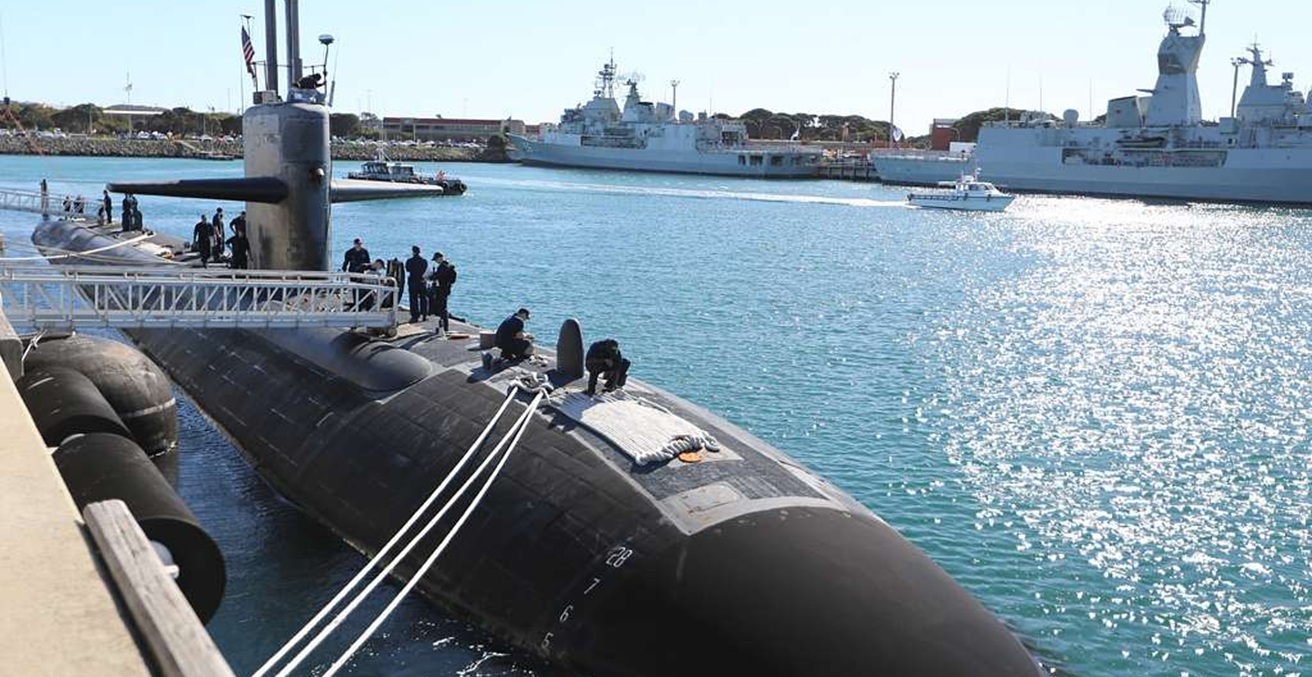While Trump’s new course on China creates some uncertainty for Australia, on balance Australia should welcome a long-overdue correction of US policy.
Faced with an increasingly authoritarian and assertive China, Australia’s main ally, the United States under President Donald Trump, has shifted its strategy and policy towards strategic competition with Beijing. A bipartisan consensus has emerged in Washington that the previous strategy, based on the assumption that over time China would “liberalise” and turn into a “responsible stakeholder,” has failed. The US strategic community has by-and-large accepted the view that Washington — and the West writ large — has gotten “China wrong” and that a more competitive approach is needed given Beijing’s ambition to displace the United States as the leading power in the Western Pacific. While disagreements exist in the Washington community about the degree and focus of the “push back,” the Trump administration’s shift toward a “more openly competitive US China relationship suggests that US strategy may be on the precipice of a significant, and potentially longer-term, realignment.”
This article argues that on balance the new era of US–China strategic competition is positive for Australia and that calls for a major shift in Australia’s security alignment and defence posture are premature. For all its flaws, the United States under President Trump remains by far Australia’s best option to balance against an increasingly authoritarian China. Repeated assertions that under the Trump presidency the US will vacate its position in the Indo-Pacific and abandon its Australian ally stand on very shaky ground. They are based on the flawed assumption that Washington’s decline is structurally preordained. They also overlook China’s many weaknesses and America’s residual strengths. China is still far from overtaking the United States as the most powerful state in the international system. Indeed, in terms of available resources of national power, the US arguably retains a sizeable advantage over China. Moreover, China’s growing economic influence over some smaller Indo-Pacific nations has not translated into those countries switching their security alignments away from the US towards China, further limiting Beijing’s ability to foster a Sino-centric security order. Instead, demand for a US-led regional security order has remained high and most countries, including Australia, have continued to “balance” against China despite closer economic ties with Beijing.
Since Trump took office in early 2017, the US has shifted the goalposts of its China policy towards greater competition with Beijing in the ideological, economic, technological and military domains. Combining elements of collective balancing and comprehensive pressure, Washington has begun to push back against Beijing. This trend is likely to continue into the future as it is a direct expression of great power rivalry and the struggle for hegemony in East Asia, and since it has bipartisan support. As John Lee has noted:
The deepening tension isn’t a transient phase in US–China relations. China has long treated America as a comprehensive rival … The US has finally accepted that reality, and that pessimistic conversion is deep and enduring. The administration’s turn against China is perhaps the only policy of Trump’s that the Democrats overwhelmingly support.
For Australia, the shift in US China policy entails both risks and benefits.
The main risk for Australia is that the Trump administration is confrontational towards China without a comprehensive, sustainable and long-term strategy for competition which includes and reassures allies. For instance, while the US government has emphasised the ideological component of US-Sino competition, the messaging has been far from persuasive. In particular, recent suggestions by a senior US State Department official about a “clash of civilizations” between the US and China have been unhelpful and were rejected by senior Australian government representatives such as Foreign Minister Marise Payne. Much more, Trump himself has undermined the very conceptual foundations of US leadership in the Indo-Pacific. As Richard Haass has pointed out, some of Trump’s policies have amounted to an “abdication from what has been a position of leadership in developing the rules and arrangements at the heart of any world order.” Left unchecked, this approach could lead the US onto a path towards becoming an “unexceptional superpower:” in turn, depriving Australia of its traditional major ally and indeed vindicating proponents of a radically new Australian security and defence policy.
However, on balance the US push back against China is positive for Australia’s interests. As made clear in Australia’s 2016 defence white paper and the 2017 foreign policy white paper, the prevention of a Sino-centric regional order and continued US leadership in the Indo-Pacific remain key to safeguarding the nation’s interests. Before Trump took office, many in the Australian strategic community criticised his predecessor Barack Obama for failing to employ a tougher response against China’s assertiveness. Washington has now shifted its gear in this direction. Moreover, the US administration’s FOIP strategy, shared by like-minded countries such as Australia, Japan and India, provides a conceptual framework to work towards maintaining key elements of a stable, rules-based Indo-Pacific order.
Moreover, the bipartisan consensus in Washington about the need to push back against China is positive from an Australian view, as it provides a level of consistency of US strategic engagement in the region going forward. Indeed, the US Congress and the foreign and security bureaucracy are playing a major role in a more sustained push-back against China. They have also formed an important corrective for some of Trump’s counterproductive impulses in dealing with allies and partners. In particular, congressional drive has been critical for initiatives towards a more multidimensional and multilateral US approach to countering China. Aside from the aforementioned ARIA and greater support for Taiwan, this has included congressional initiatives to shoring up bilateral alliances with Japan and South Korea. Congress also passed the Better Utilisation of Investment Leading to Development (BUILD) Act, signed into law by Trump in October 2018, to create a new agency to lend to developing countries in Asia and Africa. Seen as a competitor to China’s “Belt and Road Initiative” (BRI), the Build Act paved the way for trilateral cooperation with Japan and Australia, which had aimed at alternative investment schemes to counter BRI. As a result, the US, Australia and Japan signed a Trilateral Memorandum of Understanding in November 2018 to operationalise the Trilateral Partnership for Infrastructure Investment in the Indo-Pacific announced in July that year.
The Way Ahead
While Trump’s new course on China creates some uncertainty for Australia, on balance it should welcome a long-overdue correction of US policy. At present, a radically new Australian defence policy in form of “armed neutrality” or true “defence self-reliance” is not required. That said, the new phase in US-Sino strategic competition will make certain cost avoidance strategies in Canberra more difficult as there is “no “waiting this out” for Australia.” While Rory Medcalf has argued that Australia “should maintain a distinction between its sovereign pushback against PRC interference and the more comprehensive US–China strategic competition that is developing,” it is hard to see how this can be achieved given that Australia’s competition with China also involves normative, economic and security dimensions which go beyond Chinese interference tactics. Instead, out of its own national interest Canberra is likely to side with Washington more often against Beijing, either indirectly through national policies or directly in support of US initiatives.
As well, in the era of intensified US-Sino competition Australia will be asked to increase its contribution to US efforts designed to restrain Chinese behaviour, as well as intensify strategic engagements with other regional partners. Just as Australia looks to the US for support against China’s increasing strategic reach in the South Pacific, the United States expects Australian assistance in contingencies in the SCS or Northeast Asia, for instance in a US-Sino crisis over Taiwan. Some analysts have warned against supporting Taiwan since Australia should not become “embroiled” in “any Sino-American war in East Asia” or because in their view Taiwan is a lost cause. Yet, as Paul Dibb and others have pointed out, not only is it in Australia’s interest to defend Taiwan against Chinese aggression, in times of greater US-Sino competition Australian defence planning in general also needs to prepare more actively for joint military contingencies with the US ally in the South China Sea, the Taiwan Strait, the Korean Peninsula, the Indian Ocean and the South Pacific. Australia should thus support the development of a more institutionalised US alliance in order to strengthen deterrence and joint military operations in a more contested Asia.
Canberra also needs to further strengthen regional multilateral and bilateral security initiatives. For example, the security dialogue between Australia, the US, India and Japan — the “Quad” — while often criticised as either an “alliance against China” or an ineffective “talk shop” has already led to “unprecedented levels of information and intelligence exchanges, personnel interactions, interoperable equipment and habits of cooperation.” Finally, Australia will need to engage its US ally on a joint strategy for a comprehensive and long-term competition with China, including on how to prepare the Australian public for what could be significant policy changes. In this context, Canberra should also be prepared to end its refusal to participate in bilateral or multilateral freedom of navigation exercises (FONOPS) in the SCS to challenge Beijing’s sovereignty claims. While no panacea against China’s assertiveness in Southeast Asia itself, Australia’s increased naval presence and participation in FONOPS in the SCS are important to demonstrate resolve as part of collective balancing efforts. In this new era of prolonged and comprehensive competition with China, Australia needs to be willing to pay a greater premium for America’s continued leadership in the Indo-Pacific which still remains its best option for continued security and prosperity.
Professor Benjamin Schreer is professor of Strategic Studies and head of the Department of Security Studies and Criminology (SSC) at Macquarie University, Sydney.
This article is an extract from Schreer’s article in the Australian Journal of International Affairs titled “Why US-Sino Strategic Competition is Good for Australia.“ It is republished with permission.




